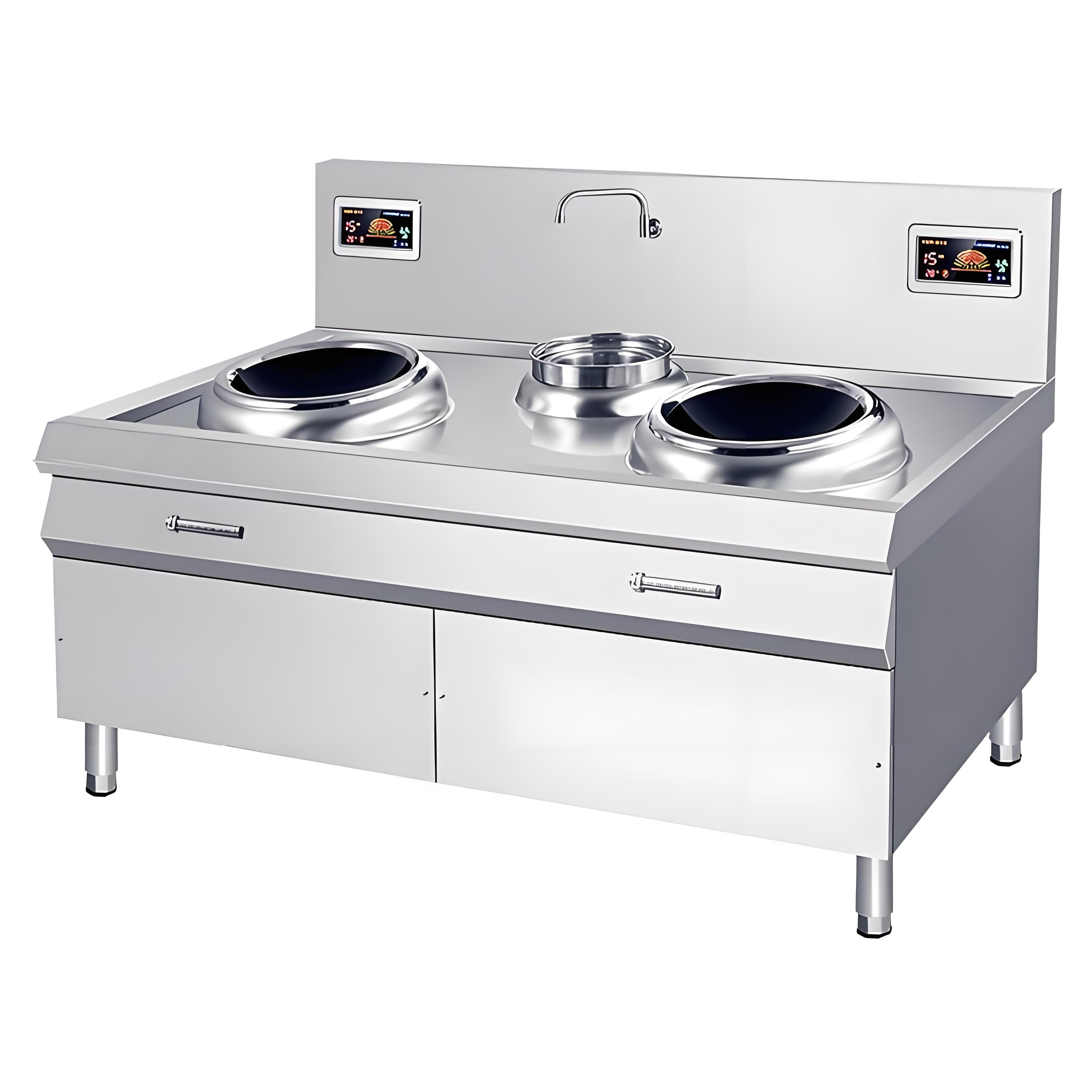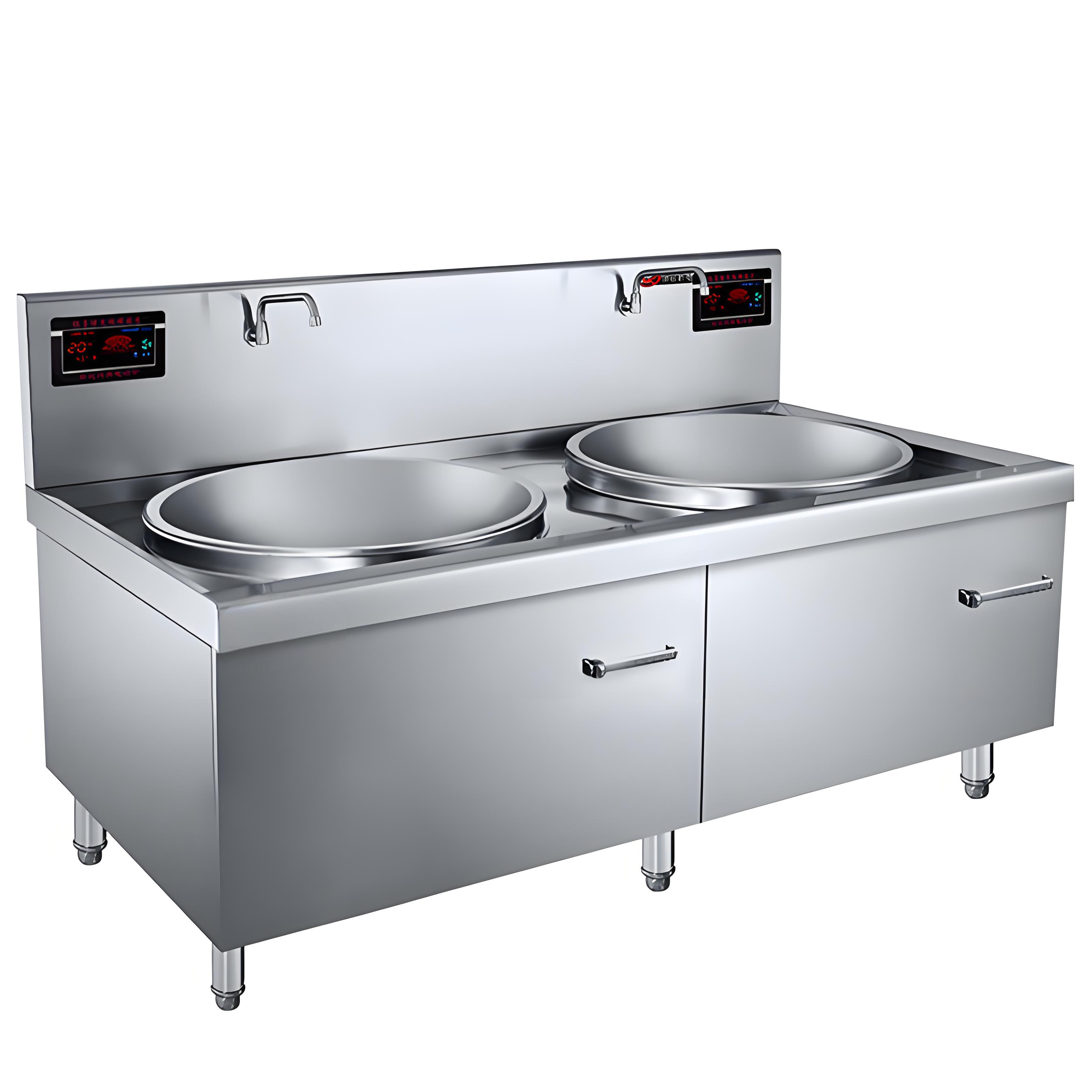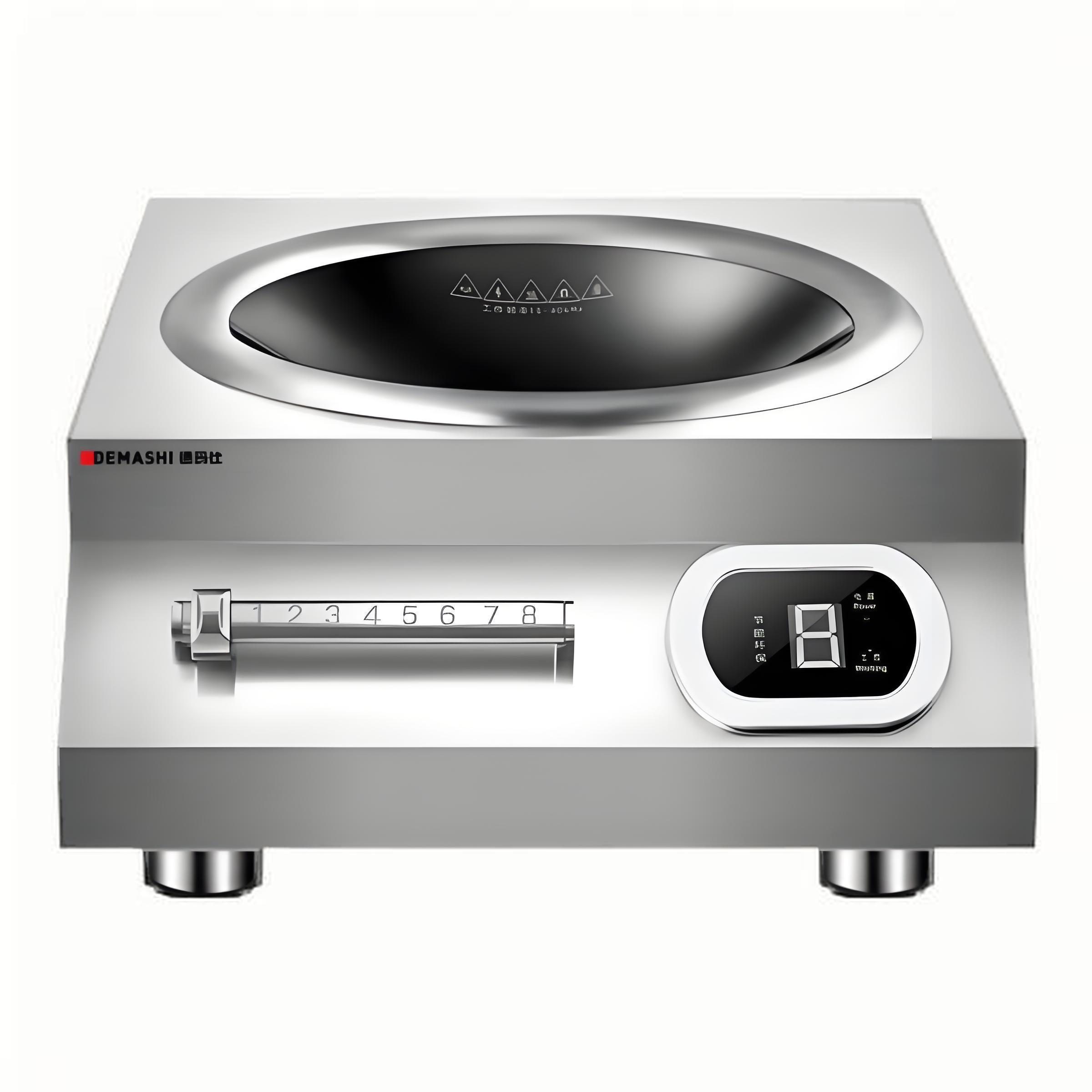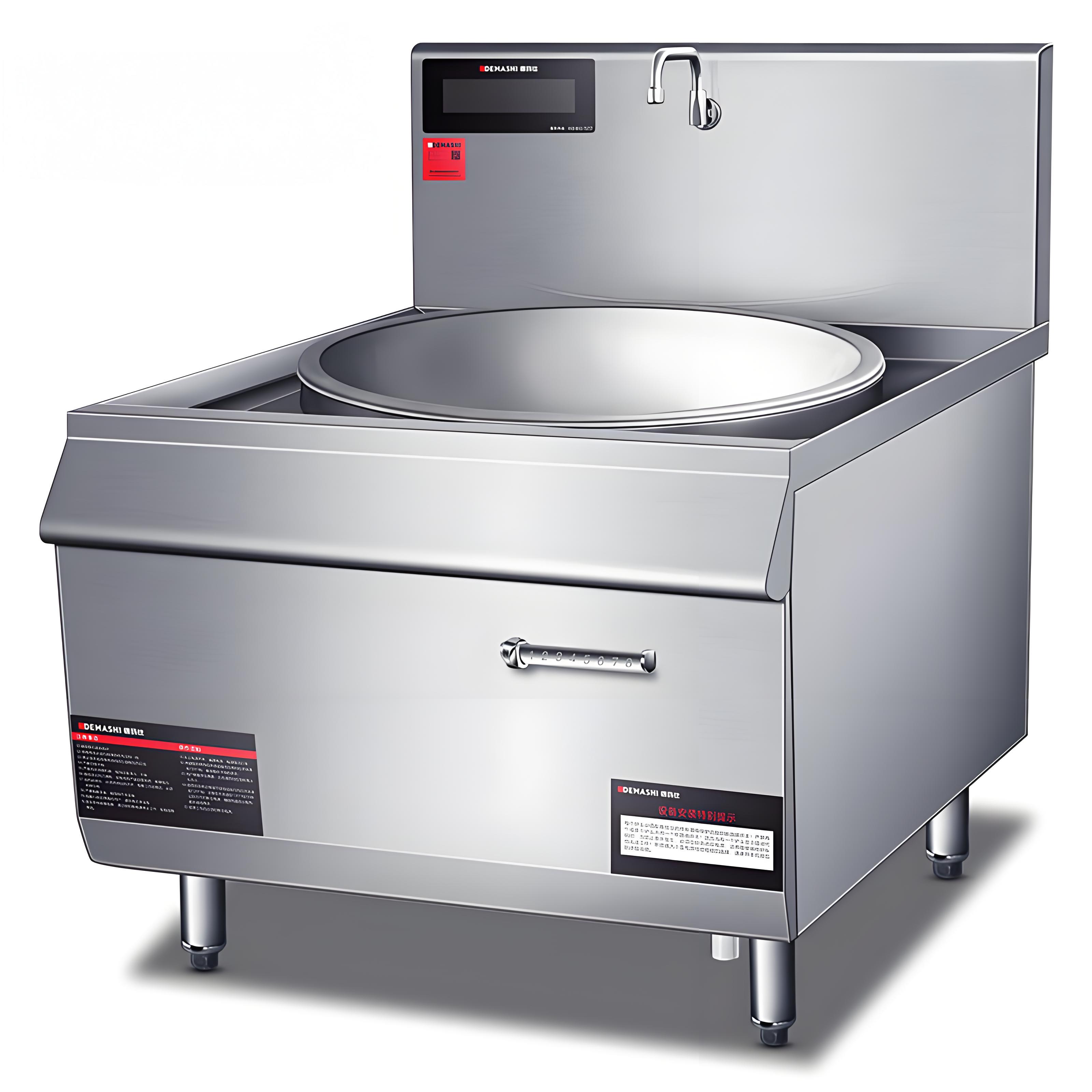In the ever-changing world of commercial kitchen equipment, commercial induction cooking has been at the forefront of industry change. Over the years, I have witnessed the development of this technology from its early days to the sophisticated systems we see today. As an industry veteran, I am excited to take a deep dive into the current state of commercial induction cooking technology.
The Early Days of Commercial Induction Cooktops
When commercial induction cooktops first hit the market, they were a novel concept. The basic principle of electromagnetic induction, which had been known for some time, was finally being applied on a commercial scale. These early models were often bulky and had limited power output. They were mainly used in high – end restaurants and experimental kitchens where chefs were eager to explore new cooking technologies.

The main advantage at that time was the fast heating capability. Compared to traditional gas or electric cooktops, induction cooktops could bring water to a boil in a fraction of the time. However, they also had several drawbacks. The cost was prohibitively high for many small – to medium – sized businesses. The cookware compatibility was limited, and only certain types of ferromagnetic pots and pans could be used. Additionally, the control systems were not as precise as they are today, making it difficult for chefs to achieve the exact cooking results they desired.
Current Advancements in Core Technologies
1. Power and Efficiency
Modern commercial induction cooktops have seen significant improvements in power output and energy efficiency. High – power models can now reach up to 30 kW or more, allowing for rapid cooking even in large – scale commercial kitchens. This high power is achieved through advanced coil designs and improved power electronics.
In terms of efficiency, induction cooktops are far superior to their gas and electric counterparts. They can achieve an energy efficiency of up to 90%, compared to around 40 – 60% for gas cooktops. This is because induction cooktops heat the cookware directly, rather than heating the surrounding air. As a result, less energy is wasted, and cooking times are reduced, leading to lower operating costs for businesses.
Comparison of Energy Efficiency Between Different Cooktop Types
| Cooktop Type | Energy Efficiency Range | Advantages in Terms of Energy Use |
|---|---|---|
| Induction | 80 – 90% | Direct heating of cookware, minimal heat loss |
| Gas | 40 – 60% | Quick temperature adjustments, but significant heat loss to the environment |
| Electric Coil | 50 – 70% | Simple design, but slower heating and more heat dissipation |
2. Control Systems
The control systems of commercial induction cooktops have become extremely sophisticated. Digital touch – screen interfaces are now common, allowing chefs to easily adjust power levels, set timers, and select different cooking modes. Some models even offer programmable recipes, where chefs can save their favorite cooking settings for future use.
Precision temperature control is another major advancement. Modern induction cooktops can maintain a stable temperature within a very narrow range, typically ±1 – 2°C. This level of precision is essential for delicate cooking tasks, such as making sauces or melting chocolate. It also helps to prevent overcooking or undercooking, ensuring consistent food quality.
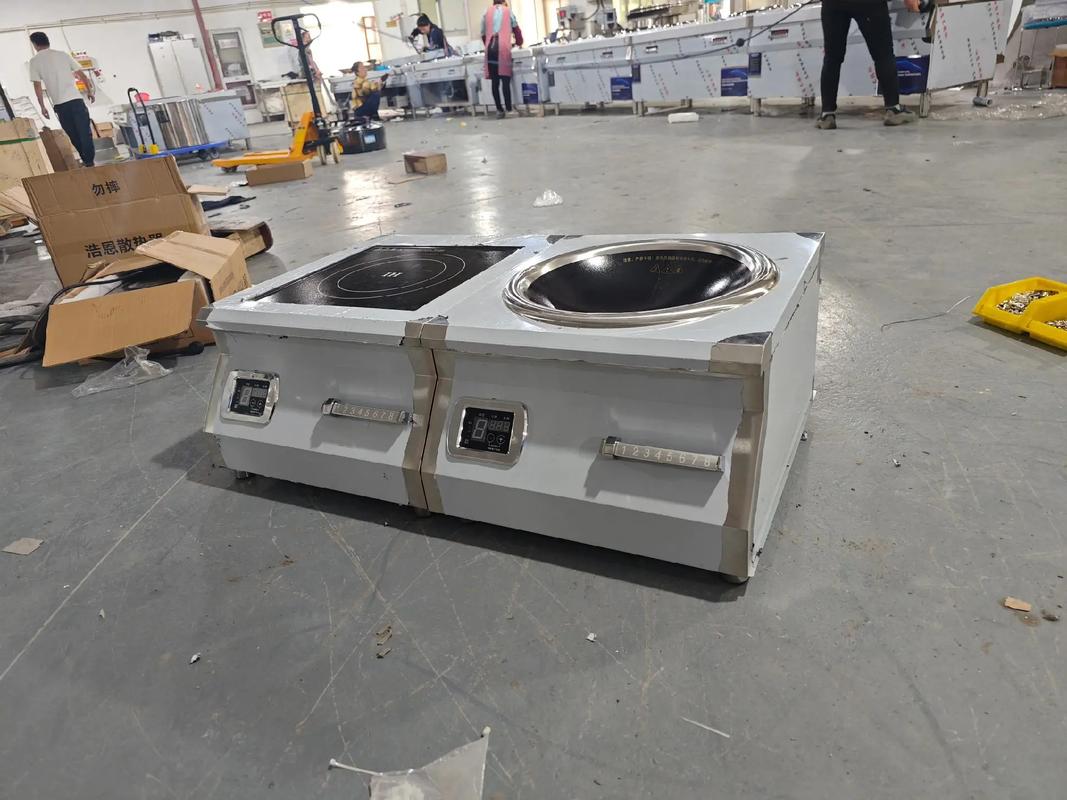
3. Cookware Compatibility
One of the biggest challenges in the early days of induction cooktops was cookware compatibility. However, manufacturers have made great strides in addressing this issue. Most modern induction cooktops can work with a wide range of ferromagnetic cookware, including stainless steel, cast iron, and some types of enameled pots and pans.
In addition, there are now induction – compatible adapters available that can be used with non – ferromagnetic cookware, such as aluminum or copper. These adapters contain a layer of ferromagnetic material that allows the induction cooktop to generate heat. This has greatly expanded the options for chefs and kitchen staff, as they can now use their existing cookware without having to invest in a whole new set.
Innovations in Design and Functionality
1. Modular Designs
Many commercial induction cooktops now feature modular designs. This means that they can be easily customized to fit the specific needs of a kitchen. For example, a kitchen can choose to have a combination of single – burner and multi – burner units, depending on the amount of cooking space required. Modular designs also make it easier to repair or replace individual components if they break down, reducing downtime and maintenance costs.
2. Safety Features
Safety is a top priority in commercial kitchens, and modern induction cooktops are equipped with a range of safety features. Overheat protection is standard on most models, automatically shutting off the cooktop if it gets too hot. Some models also have child – lock functions to prevent accidental operation. In addition, induction cooktops are generally safer than gas cooktops because there is no open flame, reducing the risk of fires and burns.

3. Connectivity and Smart Features
With the rise of the Internet of Things (IoT), many commercial induction cooktops now offer connectivity and smart features. Some models can be connected to a kitchen management system, allowing chefs to monitor and control the cooktops remotely. This can be useful for large – scale kitchens with multiple cooking stations, as it allows for better coordination and efficiency.
Smart features can also include energy usage monitoring, where the cooktop can track how much energy it’s consuming and provide reports to the kitchen staff. This can help businesses to identify areas where they can reduce energy costs and improve their sustainability.
Environmental and Sustainability Aspects
1. Reduced Greenhouse Gas Emissions
One of the significant environmental benefits of commercial induction cooktops is their reduced greenhouse gas emissions compared to gas cooktops. Gas cooktops burn natural gas, which releases carbon dioxide and other pollutants into the atmosphere. Induction cooktops, on the other hand, use electricity, which can be generated from renewable sources such as solar, wind, or hydro power. By switching to induction cooktops, businesses can significantly reduce their carbon footprint.
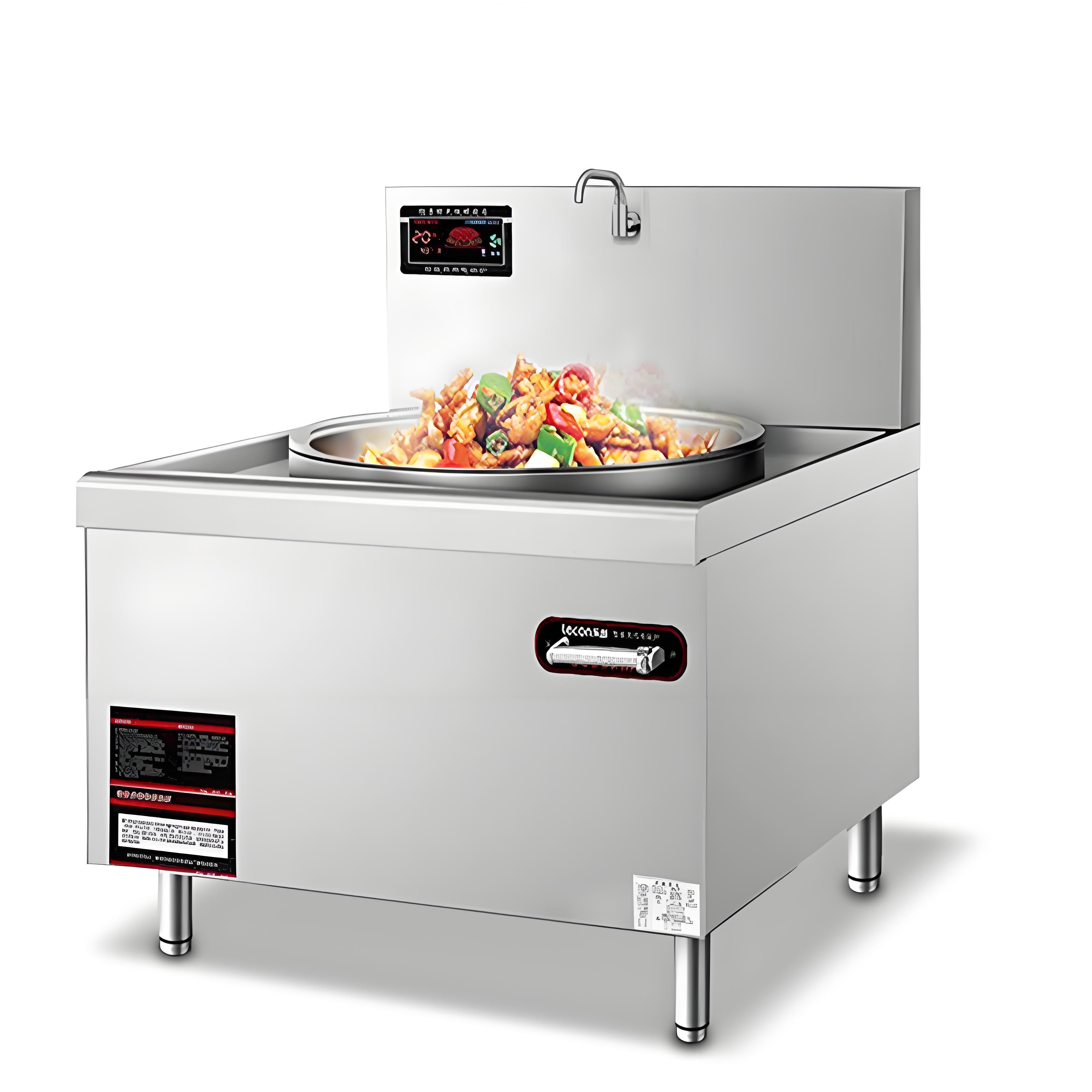
2. Energy – Efficient Operation
As mentioned earlier, induction cooktops are highly energy – efficient. This not only reduces operating costs but also has a positive impact on the environment. Less energy consumption means less demand for fossil fuels, which helps to conserve natural resources and reduce pollution.
3. Longer Lifespan and Reduced Waste
Modern commercial induction cooktops are built to last. With proper maintenance, they can have a lifespan of 10 years or more. This is longer than many traditional gas or electric cooktops. A longer lifespan means less frequent replacements, reducing the amount of electronic waste generated. Additionally, many manufacturers are now using more sustainable materials in the production of induction cooktops, further reducing their environmental impact.
Challenges and Limitations
1. Initial Cost
Despite the long – term cost savings, the initial cost of commercial induction cooktops can still be a barrier for some businesses. High – end models with advanced features can be quite expensive, especially for small – to medium – sized restaurants or cafes. However, as the technology becomes more widespread and competition increases, prices are expected to come down over time.
2. Power Supply Requirements
Induction cooktops require a significant amount of electrical power to operate. This can be a challenge for older buildings or kitchens with limited electrical capacity. Upgrading the electrical infrastructure to accommodate induction cooktops can be costly and time – consuming. Businesses need to carefully assess their power supply requirements before investing in induction cooktops.
3. Maintenance and Repair
While induction cooktops are generally reliable, they do require regular maintenance and occasional repairs. The electronic components can be sensitive to power surges and other electrical issues, and if not properly maintained, they can fail prematurely. Finding qualified technicians who are familiar with induction cooktop technology can also be a challenge in some areas.

Future Trends in Commercial Induction Cooktop Technology
1. Further Improvements in Energy Efficiency
Researchers and manufacturers are constantly working to improve the energy efficiency of commercial induction cooktops. Future models may incorporate even more advanced power electronics and coil designs to further reduce energy consumption. Additionally, there may be developments in energy storage technologies that allow induction cooktops to operate more efficiently during peak demand periods.
2. Enhanced Connectivity and Automation
As the IoT continues to evolve, we can expect to see even greater connectivity and automation in commercial induction cooktops. Cooktops may be able to communicate with other kitchen equipment, such as ovens and refrigerators, to optimize the cooking process. Automated cooking functions, where the cooktop can adjust power levels and cooking times based on the type of food being prepared, may also become more common.
3. Integration with Renewable Energy Sources
With the increasing focus on sustainability, there is a growing trend towards integrating commercial induction cooktops with renewable energy sources. For example, cooktops could be designed to work with solar panels or wind turbines, allowing businesses to power their kitchens with clean energy. This would not only reduce their environmental impact but also provide long – term cost savings.
Real – Life Examples of Commercial Induction Cooktop Applications
1. High – End Restaurants
Many high – end restaurants have embraced commercial induction cooktops for their precision and speed. Chefs can use the advanced control systems to create complex dishes with exacting standards. For example, a Michelin – starred restaurant may use induction cooktops to sear meats at high temperatures and then quickly reduce the heat to finish cooking them gently, ensuring a perfect texture and flavor.
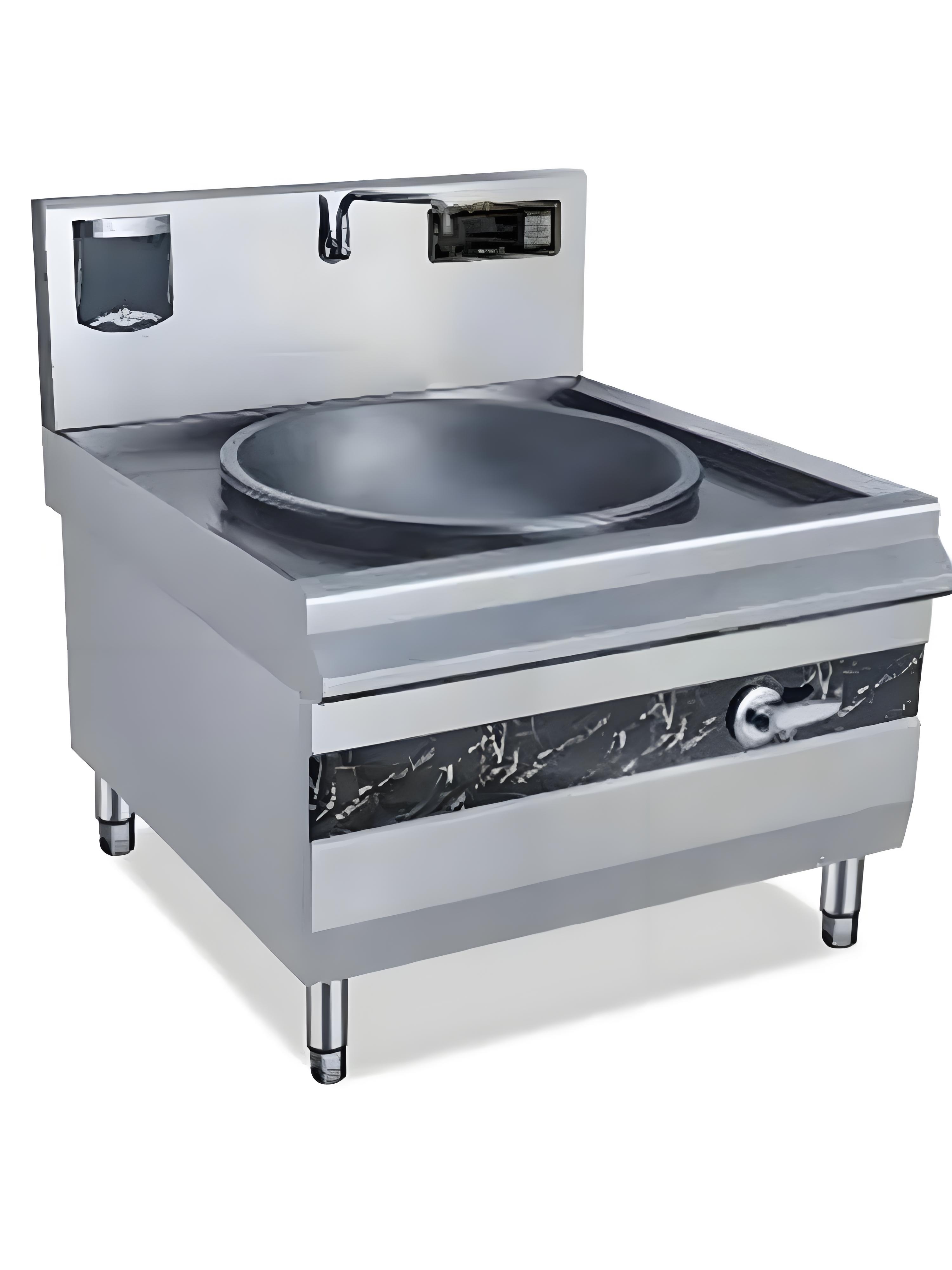
2. Catering Companies
Catering companies often need to cook large quantities of food quickly and efficiently. Commercial induction cooktops are ideal for this purpose, as they can heat up large pots and pans rapidly. The modular designs also allow catering companies to customize their cooking setup based on the size and type of event they’re catering.
3. School and Hospital Kitchens
In school and hospital kitchens, safety and efficiency are paramount. Induction cooktops are a great choice because they don’t have an open flame, reducing the risk of fires and burns. The precise temperature control also helps to ensure that food is cooked to the correct temperature, reducing the risk of foodborne illnesses.
Conclusion
Commercial induction cooktop technology has come a long way since its early days. From improved power and efficiency to advanced control systems and innovative designs, modern induction cooktops offer a range of benefits for commercial kitchens. While there are still some challenges and limitations, such as initial cost and power supply requirements, the future looks bright for this technology. With ongoing research and development, we can expect to see even more advancements in the coming years, making commercial induction cooktops an even more attractive option for businesses in the foodservice industry.
Related Questions
Q1: How do I know if my existing cookware is compatible with a commercial induction cooktop?
A1: You can perform a simple magnet test. Take a magnet and place it on the bottom of your cookware. If the magnet sticks firmly, then the cookware is likely to be compatible with an induction cooktop. Ferromagnetic materials such as stainless steel and cast iron usually work well, while non – ferromagnetic materials like aluminum, copper, and glass will not work.
Q2: Can a commercial induction cooktop be used in a mobile food truck?
A2: Yes, a commercial induction cooktop can be used in a mobile food truck, but there are some considerations. You need to ensure that the food truck has a sufficient power supply to handle the cooktop’s electrical requirements. Additionally, you may need to install a voltage stabilizer to protect the cooktop from power surges that can occur in a mobile environment.
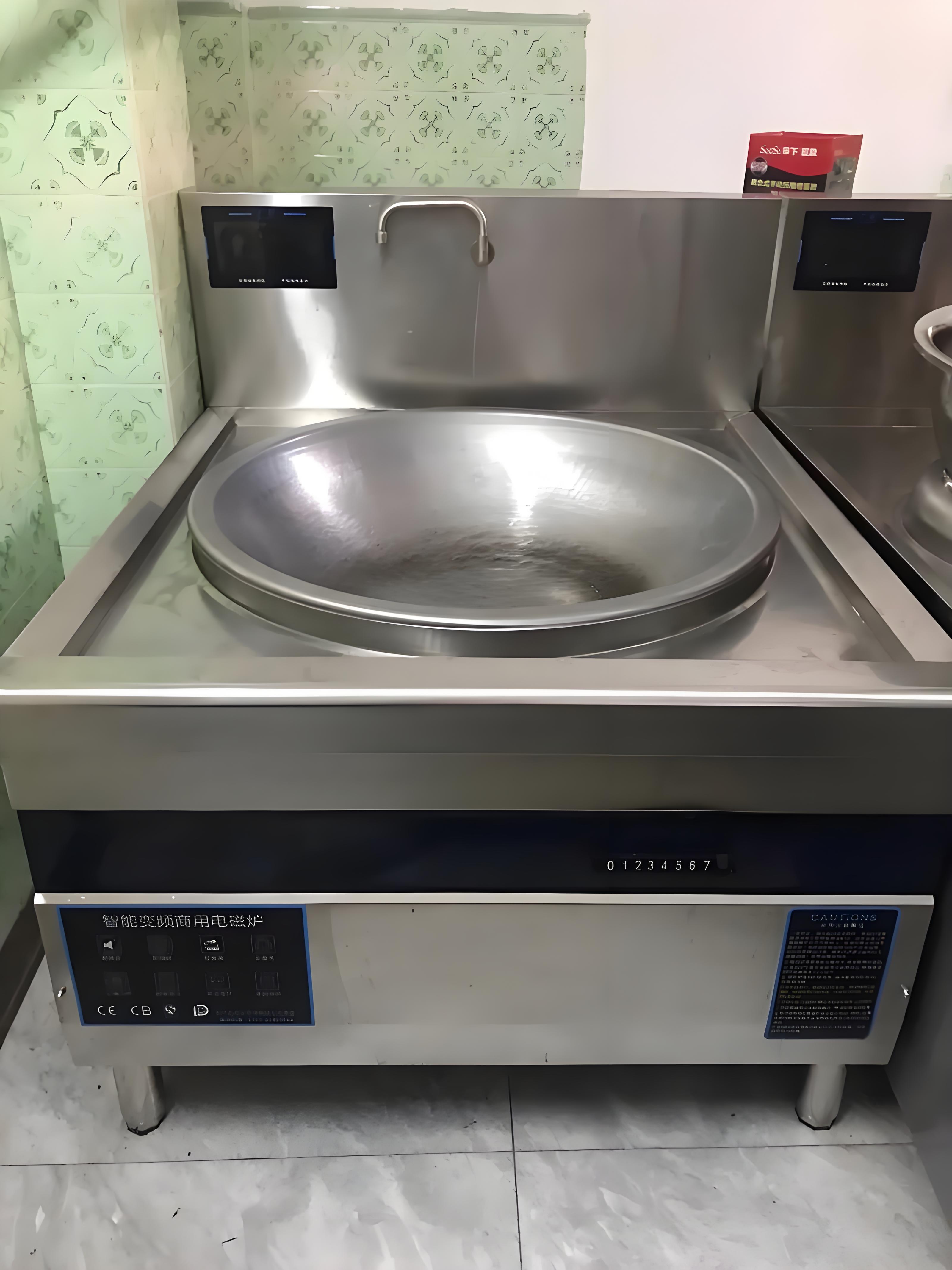
Q3: How often should I have my commercial induction cooktop serviced?
A3: It’s recommended to have your commercial induction cooktop serviced at least once a year by a qualified technician. Regular maintenance can help to identify and fix any potential problems before they become major issues. The technician can clean the internal components, check the electrical connections, and ensure that the cooktop is operating at its optimal efficiency.
Q4: Are there any government incentives for businesses to switch to commercial induction cooktops for environmental reasons?
A4: In some regions, there may be government incentives or rebates available for businesses that switch to energy – efficient equipment, including commercial induction cooktops. These incentives can vary depending on the location and the specific program. It’s worth checking with your local government or utility company to see if there are any available incentives in your area.
Q5: Can I use a commercial induction cooktop for canning or other high – heat preservation methods?
A5: Commercial induction cooktops can generally reach high enough temperatures for canning and other high – heat preservation methods. However, you need to make sure that the cooktop you choose has a high enough power output to maintain the required temperature for the duration of the canning process. It’s also important to follow proper canning procedures and use the appropriate cookware to ensure safety and successful preservation.
